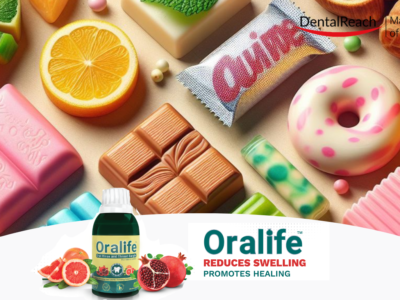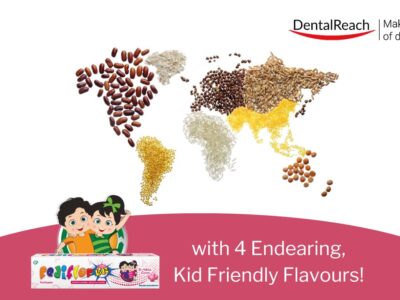– Dr Premila Naidu
“We call a child’s mind “small” simply by habit; perhaps it is larger than ours is, for it can take in almost anything without effort.”– Christopher Morley
In quote above, are all the secrets required for management of children in dental practice.
Abstract
This articles combines the theory of child management and the clinical application of this from day to day practice, and modification based on present day parents will be discussed in detail. For better understanding of such a vast subject with unlimited factors to consider, we have grossly divided it into various subheadings .
The final goal
The final goal of dental treatment in a child is –
- To make sure the child is comfortable
- To offer freedom from pain
- To execute procedures safely
- To carry out the treatment capable
- To boast of the child’s and parent’s agreement to the procedure
Modifications in Clinic & Staff
A child friendly environment, as soon as the child enters, sets the mood for a happy experience .
Colour is a salient feature in a child’s life, from their cradle days, toys, nursery and schools. In such colourful environment child sees resemblance to place he/she has been and helps to connect with the environment .
Studies have found that a child as young as 3 years can associate certain colours with certain emotions, brights colours like yellow, green, pink, blue has a positive response while dark colours like black, brown have negative response like anxiety and depression.
A toy box, a play area and similar little things can further help the child.
The caring and assuring manner in which the child is welcomed especially in the first appointment comes a long way.
Distraction like music or a screen playing child’s favorite cartoons have been very beneficial.
Case history, examination and treatment planning
- Along with the usual details, addition of fun things like a child’s favorite cartoon and colour hobbies will be great ice breakers for dentist to start age appropriate conversations with the child.
Past dental experience helps us understand the child better, but we should not judge the child purely based on that.
Communicative management and appropriate use of commands are universally applied in children. Asking questions and active/reflective listening can establish rapport and trust.
Using sentences like “Can I count your teeth?”, rather than “check up” helps child understand and comprehend better. The initial communication during the check up sets the tone for rest of the appointments and will be dealt later in detail.
Once the examination is done, a detailed treatment plan is designed keeping the child’s age and level of operation in mind and this is discussed in detail with parents. This gives us an opportunity to understand parental attitudes towards dental health.
Parental fear of the procedure, parent’s past dental experience and their own anxiety can adversely effect the attitude and response to dental care .
Parenting styles have changed in recent decades and dentists are faced with challenges from a rising number of children who are at times, ill equipped with skills or self discipline necessary to deal with novel experiences. Some parents also tend to dictate the treatment, so at this initial stage itself it is important to have effective communication leading to a treatment plan keeping the child’s best interest in mind.
All these steps helps in building trust with the parent –
- counselling of parents,
- clearing their doubts,
- reassuring them,
- explaining the facts,
- setting the expectations right and
- giving them time to decide .
It is also advisable to discuss various behaviour management techniques that can be may be required for the dental treatment.
Referring the patient
At this stage if the dentist finds, he is not able to manage the child’s behavior, parents attitude or both, this would be the best time to refer the child to a specialist.
Even further down the treatment , the earlier a referral is done its better than after the child has become extremely apprehensive/uncooperative or both.
Dentist : The dentist behaviour is the primary tool used to guide the behaviour of pediatric patient .
The dentist body language, attitude and communication skills play a critical role. The dentist and the dental team should remain attentive to their communication styles through out their interactions with the child and parents .
There are four essential ingredients of communication
- The sender
- The message, including the facial expression and body language of the sender
- The context or setting in which the message is sent
- The receiver.
For a successful bi directional communication, all the 4 elements have to be present.
- The dentist needs to use age appropriate vocabulary and body language, which remains consistent throughout the interaction. Children as young as 3 years can sense a smart, dominant and nice individual from non verbal communication. This plays a very important role as we need to portray ourselves not only as nice and smart but also dominant, to gain the child’s attention and co-operation through the procedure.
Dentists are advised to avoid body language that may convey uncertainty ,anxiety or urgency.
Basic behaviour guidance
Communication remains the most important, and plays an vital role in all the modification techniques. From gentle teacher student voice during the tell-show-do technique, to a calm and friendly voice while giving child the instructions like raise your hand to stop the procedure. This helps in building trust with the child, and gives child a sense of control.
Voice modulation between firm and appreciative works very well during voice control.
The various behaviour management techniques we frequently use-
1. Desensitisation :used in children with previous anxieties, the child’s anxiety is dealt with by exposing child to dental experiences in the order of increasing anxiety provocation. To put it simply — in the first few appointments simpler procedures are done, like check ups, x rays, and sealants to reduce the child cope with anxiety and also helps increasing child’s confidence in handling dental procedures. It has worked very well, when the child’s first appointment is simple, he/she also develops a sense of achievement and we also compliment and gift the child for helping us with successful checkup and we also combine it with introducing the child to drill, by showing them how it works (TSD) which prepares the child for the next appointment.
2. Tell – Show -Do (TSD) : here the procedure is first described in words and phrases to child’s understanding. We believe in using a lot of euphemism here ( for eg water spray instead of drill, vanilla paste instead of restorative material ). Then the procedure is demonstrated in a way that involves appropriate senses and finally performed without any delay .
3. Modelling : child tends to learn from a model of similar age, gender or someone the child looks up to. Modelling has limited usage in the clinical practice.
4. Reinforcement : when a behaviour that follows a stimulus is reinforced, its strengthened and is more likely to recur in similar circumstances. There is positive reinforcement, that’s when, desired behaviour is rewarded with compliments. We give every child who gets treatment done, stickers and balloons and over the years we have realised what a positive impact it has on children and how they remember it for years . Then, there is negative reinforcement. For example I request the parents to wait outside and call them in once the child calms down and agrees to listen. Sometimes what works, best is voice modulation, where a firm loud voices used to gain child’s attention , and once a desirable behaviour is achieved immediately the child is complimented .
5. Voice control: Changes in tone and loudness of speech along with changes in facial expression is what is described as voice control . “Open your mouth and stop crying” in a loud and sharp voice can surprise the child, help the dentist gain the child’s attention and proceed with the procedure. Appropriate use of voice control is known to be very successful in managing children.
6. Memory restructuring : it is a behavioural approach in which memories associated with negative or difficult events are restructured into positive memories .
Restructuring involves 4 components
- visual reminders
- positive reinforcement
- concrete examples to encode sensory details
- sense of accomplishment.
7. Restraints : Restraint in the dental setting is the act of physically limiting the body movements of child in order to facilitate dental procedure and decrease the possible injuries to the child. For younger children , we encourage using lap to lap position, that helps in restraint and also comforts the child as the child is facing the parent. As the child age increases , the child can sit on parents lap and parents can hug the child , which would provide restraint as well as comfort the child . Our dental team also plays a role in gently holding the child’s hand or head to avoid injuries .
Other forms of bodily restraint, wrap and hand over mouth behaviour modification techniques are there, but are not widely used.
8. SADE : sensory adapted dental environment :
It includes adaption of clinical settings to produce calming effect. The objective is to enhance relaxation and avert negative avoidance behaviour .
Conclusion
Understanding child’s mind is no child’s play , the more we understand the more equipped we are to handle the little humans in the dental clinic.

















Comments